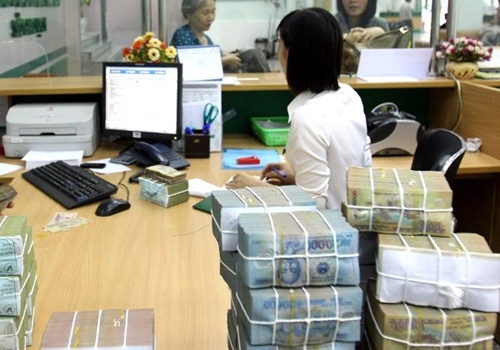Vietnamese banks enhanced transparency in 2015: Moody's
 |
| "There is now both an acceleration in loan growth -- mirroring a cyclical economic upturn -- and higher loan provisions related to problem assets, including securities from the Việt Nam Asset Management Company (VAMC)," Eugene Tarzimanov, Moody's vice-president and senior credit officer, said. - Photo VNA |
The report is titled ‘Banks - Viet Nam: FY2015 results point to enhanced transparency on asset risks but rising pressure on profitability and capital'. The rating agency said the corresponding increase in loan-loss provisions was also raising credit costs for banks, thus putting pressure on profitability.
"There is now both an acceleration in loan growth — mirroring a cyclical economic upturn — and higher loan provisions related to problem assets, including securities from the Viet Nam Asset Management Company (VAMC)," Eugene Tarzimanov, Moody's vice-president and senior credit officer, said.
"While these developments have fostered enhanced transparency on asset risk, we expect the continued build-up in large provisions will translate into weak bottom line results," Tarzimanov said.
Moody's report said greater transparency on asset risks was the result of two regulatory developments. First, the acceleration in the carve-out and recognition of bad loans, as reflected in an increase in banks' holdings of VAMC securities, is in line with the central bank's mandated resolution to reduce NPLs to below three per cent of the loans by the end of 2015. Second, a tightening in the regulatory guidance on NPL recognition follows the full implementation of Circular 02/09 in April 2015 regulating asset classification and risk provision.
While some uncertainties remain as to the true level of impaired assets in the banking system, the change in problem asset composition is in line with Moody's view that current asset quality metrics have become more transparent.
Reflecting the increased recognition of problem assets through VAMC bonds, the 10 Moody's-rated Vietnamese banks posted a sharp 49 per cent increase in credit costs which reached VND24.9 billion (US$1.1 million) in 2015.
The highest rated banks also reported declines in their equity/total asset ratios in 2015, reflecting not only higher credit costs, but also the system's rebound in credit growth.
For 2016, Moody's expects a further weakening in the banks' capital buffers, as credit growth and provisioning expenses outpace the capacity for internal capital generation. Banks also have few sources of external capital, given limited domestic resources and restrictions on foreign investments in banks.
What the stars mean:
★ Poor ★ ★ Promising ★★★ Good ★★★★ Very good ★★★★★ Exceptional
Latest News
More News
- The promotion of ESG via banking (November 21, 2024 | 09:32)
- Standard Chartered committed to Vietnam’s financial success (November 21, 2024 | 09:24)
- Full ESG adoption the priority for Agribank (November 21, 2024 | 09:07)
- Banks entice youth with tech advances (November 21, 2024 | 08:00)
- ESG represents a shift towards sustainability for banks (November 20, 2024 | 13:00)
- GGGI supports Vietcombank’s debut of $80 million green bonds (November 20, 2024 | 11:20)
- SHB and the ESG journey: creating social value in every step (November 19, 2024 | 15:00)
- Banking sector contributes to ESG, green growth, and sustainable development (November 19, 2024 | 14:42)
- ESG implementation in banking: from awareness to action (November 19, 2024 | 12:08)
- VIR hosts 'ESG in Banking: Leading Through Implementation' conference (November 19, 2024 | 11:14)




















 Mobile Version
Mobile Version